Finders-in-the-field: Royal Tern, Mayo and Kerry, August 2016
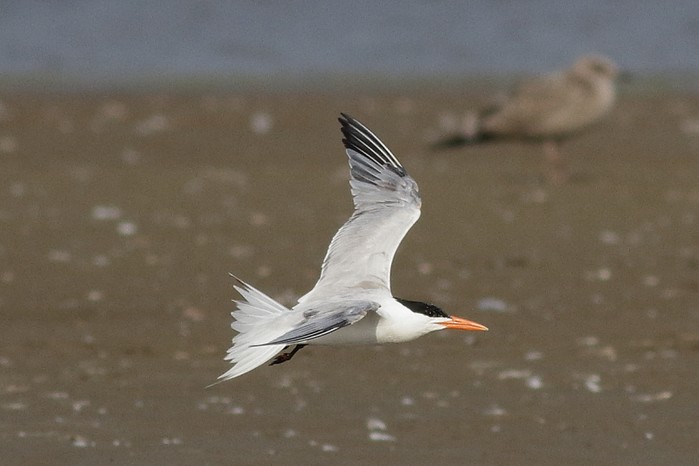
Following an excellent start to the autumn for Nearctic shorebirds in Ireland, Sligo birder Seamus Feeney decided it would be worth driving the 80 miles from his home to the south west coast of County Mayo in search of his own finds.
He focused on the area that runs south from Clew Bay to Curragaun Lake, a distance of about six and a half miles. There is plenty of ideal habitat in the wider Carrowniskey-Killadoon area with storm beaches and freshwater lakes just inside the shingle bank. At the southern end lies Corraguan Lough and an extensive machair.
A fairly fruitless day looked on the cards, as after checking the beaches and all but one of the lakes, he had only turned up a few Dunlin and a single Ruff! Last port of call for the day was to be Roonagh Lough and after drawing another blank on any shorebirds Seamus decided on a scan of the gulls and terns before calling it a day.
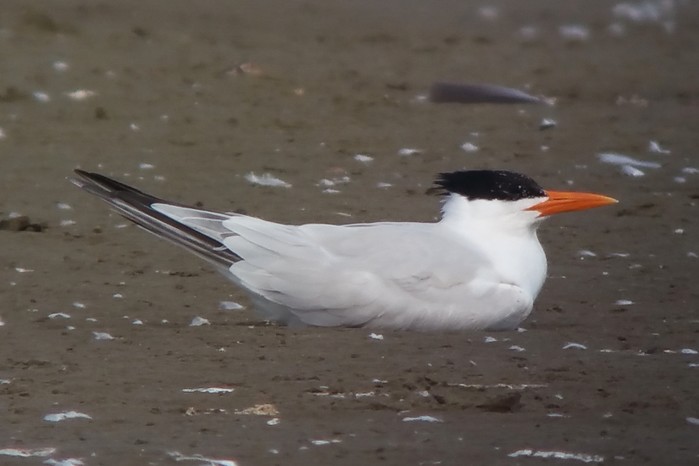
On his first scan he was shocked to see an orange-billed tern; his first thought was that he had found a Caspian and he rushed back to the car for his scope and camera. Upon returning and scoping the bird he was now aware that he hadn’t found a Caspian Tern but in fact had found Ireland’s second ever Royal Tern!
After grabbing some records shots he contacted a few birders he thought might be nearby, including Dermot Breen who was only an hour away and was able to get to see the bird, which spent most of the time sitting on the ground sleeping. Later views and shots of the bird in flight showed it had an injured right leg.
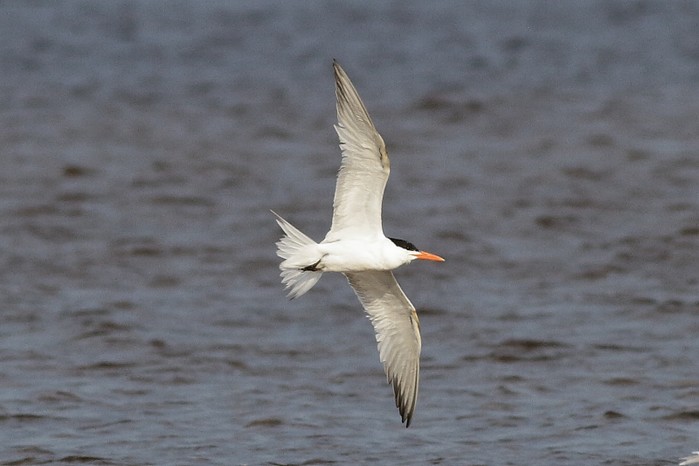
The tern flew off and returned on a number of occasions, so Seamus and Dermot were anxious for the birders now travelling to the site, many from long distances around Ireland. Before it headed to roost six birders in total had seen it and a further nine or ten saw it the following morning. A number of British birders who travelled overnight were not so lucky.
Given rare terns propensity for getting relocated, many were still hopeful that they would get another shot. Fast forward nearly a week and some 80 odd miles south to Beale Strand in County Kerry and one of ‘Kingdom’s’ stalwart birders Davey Farrar was busy looking at small waders on the high tide.
Like Seamus he too was left disappointed by the lack of shorebirds to look through, so he concentrated on scanning the terns on the sand bar. Most of the flock were hidden by a shelf on the beach but after some had moved he picked up a bird he described as having a yellow-ish/orange bill but which was huge. With Seamus’s recent discovery he could only think about Royal Tern.
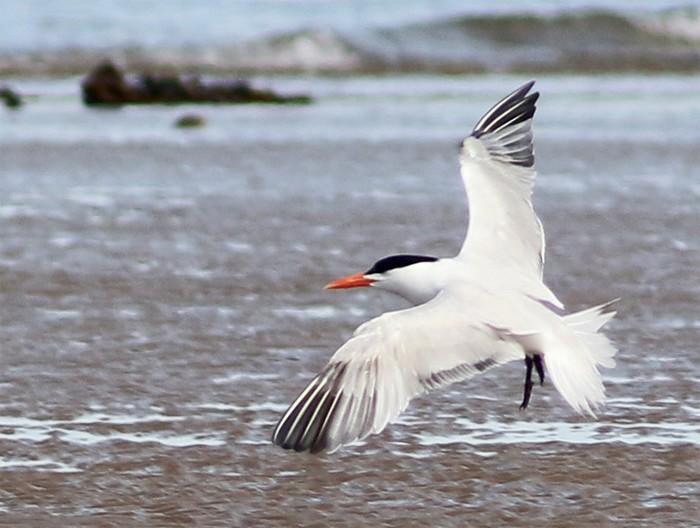
Shaking with excitement he tried grabbing some record shots but shaking and record shots don’t usually make a good combination. So recomposing himself he managed to get some better views and photos and it was obvious that he was looking at Seamus’s bird as it was carrying the same injury to it’s right leg.
The bird showed daily from 23rd-28th August, but frequently visited the Co Clare side of the Shannon Estuary
Royal Tern in Britain and Ireland
Royal Terns do not normally hang around! In fact, until this Royal Tern arrived in Co Kerry, many of Britain and Ireland’s fastest-moving twitchers had failed to connect with the species – the accepted birds at St Ives (Cornwall) in September 1971, Kenfig Pool (Glamorgan) in November 1979, Mumbles (Glamorgan) in December 1987, Thorntonloch and Musselburgh (Lothian) in August 1999 and Clonakilty (Co Cork) and subsequently Abersoch (Gwynedd) and Llandudno (Conwy) in June 2009, had all vanished soon after discovery.
Please note that subscriber only features have been disabled on this graphic.
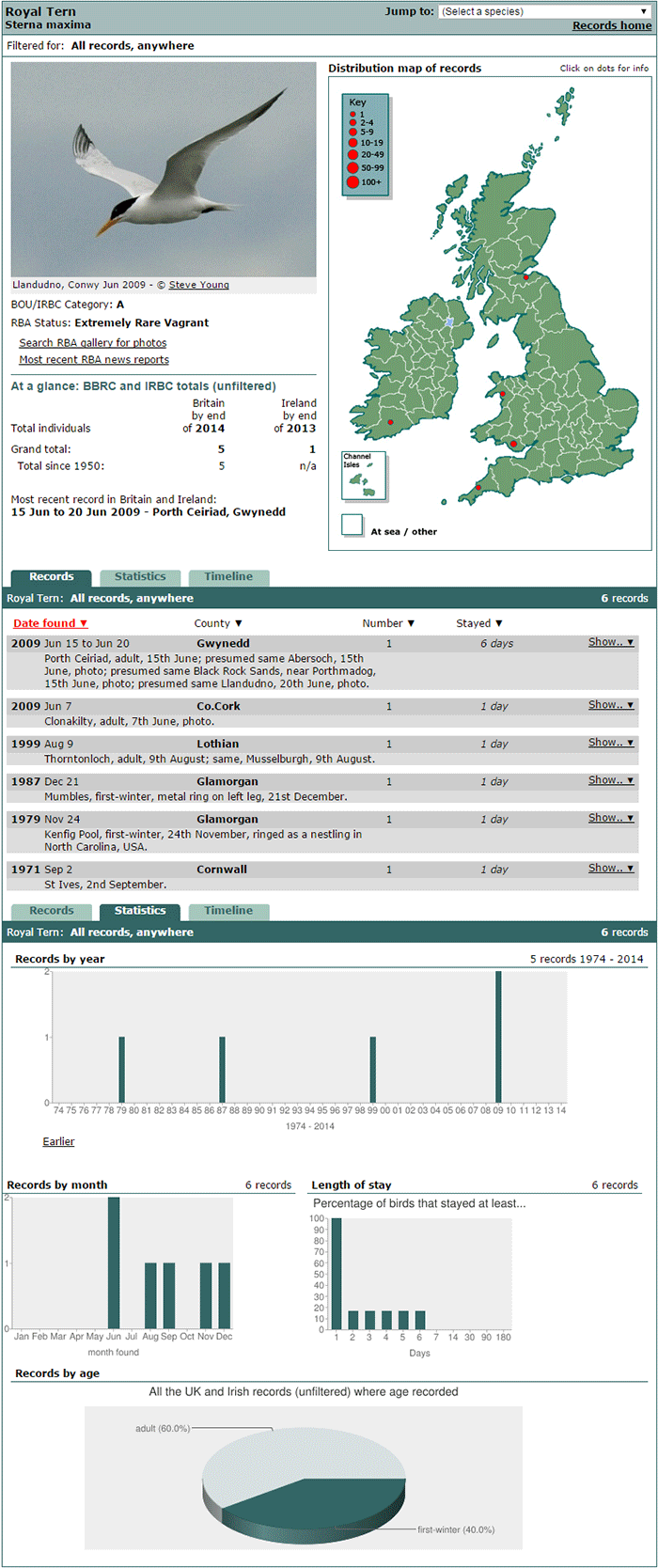
American or African Royal Tern?
The huge size of the bird compared to Sandwich Tern, coupled with the deep based, sturdy orange bill result in a stress-free identification process; both Lesser Crested and Elegant Tern are easily eliminated from the equation. However, identifying the bird to form is far trickier. American Royal Terns (form maxima) tend to have heavier orange-red bills and slightly darker upperparts than North African birds (form albidorsalis), which typically have a slighter, yellow bill with a less-obvious gonydeal angle. The Co Mayo/Co Kerry bird’s bill shape and colour is suggestive of American Royal Tern, and the acquisition of a feather and faecal sample from the bird during its visit to Kerry may ultimately put the bird’s racial identify beyond doubt. The American form is on the British List (the 1979 Glamorgan bird came bearing a metal ring that was traced to a breeding colony on the east coast of the USA), whilst the 1999 Lothian and 2009 Co Cork and North Wales birds both resembled the West African form.
Rare Bird Alert
30 August 2016
Write for Rare Bird Alert
Do you have a birding story you would like to share? From foreign birding trips to your local patch, finders accounts and more, we would love to hear from you.
All our articles are free for anyone to view and we include them in our weekly newsletter which goes out to thousands of birders every Wednesday. We also share them on our Twitter and Facebook pages, making sure your article will get read by as many people as possible.
If you would like to write an article please for us please get in touch with your ideas, thank you.
The RBA team






